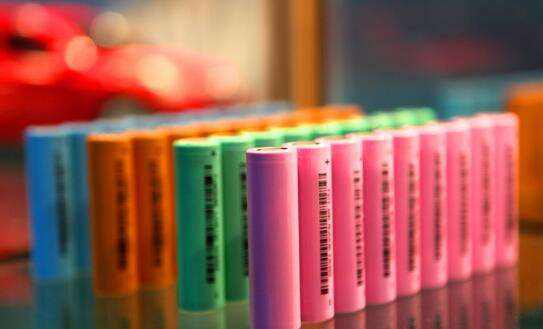Are all rechargeable batteries lithium?
Dec 13, 2019 Pageview:1526
It is amazing how batteries have taken over the world of electronics and portable energy. They have become part and parcel of modern humanity. It seems as though the world would stop running without batteries.
Since the number of battery dependant devices has been increasing steadily over the last few years, battery manufacture has also increased. Smartphones, digital cameras laptops, and lately electric vehicles depend on strong battery power. As a result, competition among manufacturers to produce the most outstanding battery technology has almost doubled in the past decade.
Above all, lithium based batteries have remained on top as the perfect solution. They come in different shapes, capacity and sizes to fit the needs of different devices.
Since the most common lithium batteries and lithium ion, and 18650, which are rechargeable, it can be easy to assume all rechargeable batteries are lithium. Besides, any other chemistry that comes up with better features seems to be lithium based.
However, not all lithium batteries are rechargeable. And not all rechargeable batteries are lithium. It is important to understand this so that you know how to buy your batteries.
What types of rechargeable batteries do you know?
Are you looking to buy new batteries for your laptop, or Smartphone? Then you are definitely going for rechargeable batteries. But how much do you know about rechargeable batteries? Do you understand your options? Consider the following:
Nickel-Metal Hydride (NiMH)
Did you know that NiCds were the only rechargeable batteries for household sizes until the late 1990s? However, they had terrible capacity. The batteries were running high-drain devices but they still could not hold power for long. Besides, they contain toxic cadmium, which considered hazardous. As the century came to a close, NiMHs were introduced as a savior from this tyranny.
NiMHs became popular quickly as they offered triple the capacity. At the same time, they contained non-hazardous material which made them safer around households. And to top it up, they retailed at about the same price. NiCds disappeared and today you can find NiMHs on Amazon and other selected outlets.
Nickel-Zinc (NiZn)
PowerGenix introduced NiZn on the market in the stead of NiMHs. There strength lies in holding high voltage. They are, as such, a better choice for devices that the 1.2V NiMHs cannot support.
You will find them more in digital cameras, giving them faster flash power back. They are also found in flashlights; where they burn brighter. However, the high voltage should not get you excited too soon; it can be both for good and for bad as well. The voltage can easily burn out light and sensitive devices.
They also come with a number of other disadvantages. For instance, PowerGenix only made them in size AA, and the suffer reliability issue. They discontinued the manufacture after two years. There are a few off-brands still available on Amazon, as well as some Chinese brands on e-Bay. Today they are found in different shapes and sizes.
Lithium Ion (Li-Ion)
Li-ion batteries are perhaps the most common type of rechargeable batteries. They have taken the market by storm, owing to their high capacity and power. Whereas normal batteries, like AAA, AA, C and D have a voltage of 1.2 to 1.5V, Li-ion batteries give a 3.7V. This means using them in a device meant for using them in a device that use 1.5V can easily fry the device.
Lithium ion batteries are manufactured for devices designed for them. They are also useful for those building their own devices with high power requirements. There is a specific naming system for Li-ion batteries, meant for avoiding confusion based on device needs. You will find names like:
10440 for size AAA
14500 for size AA
18650 for a size larger that AA but smaller than 25000(size C)
They also require a special charge. Using a NiMH charger for Li-Ion batteries may not work, or may destroy the batteries.
Nickel-Cadmium
All NiCads are exclusively rechargeable. They are not very many because they have been replaced by NiMHs. They don’t have any advantages over NiMHs. Their lousy capacity and toxic nature makes them a huge disappointment. They are not easy to find anyway, since no one may even want them. They can deliver enough power to light up high-drain devices, but they will not do so for long.
Rechargeable Alkalines (RAM)
RAM stands for Rechargeable Alkaline Manganese. They were introduced in 1992 to compete with NiCds. They claimed to be the best; with reusable features, high voltage, and long alkaline’s shelf life. But they are not the only ones with such; LSD NiMHs have longer shelf life. NiZn on the other hand have better voltage. There seem to be no sources for RAMs today.
Which types of rechargeable batteries are best?
There are three factors that determine the best battery, these include:
Capacity
-NiMH; ranges from 1200 to 2700 mAh
-NiZn; 1500 and 700 mAh for AA and AAA respectively.
-Lithium batteries; can go up to 5000 mAh. Latest chemistries like LiPo have even higher capacity.
Self discharge
-NiMH; Highest self-discharge rate
-NiZn; about 8% per month
-Lithium; about 5% per month depending on the chemistry.
Voltage
-NiMH; rated at 1.2V nominal voltage
-NiZn;1.65V nominal voltage
-Lithium; 3.7V and above.
Cycle life
-NiMH; Can offer hundred of cycles in theory. Affected by overcharging. They also have a memory effect.
-NiZn; no specified depth of discharge. Can give 100-500 cycles
-Lithium; can offer up to 700 life cycles
Based on this, Lithium based rechargeable batteries are the best. They are readily available and can power anything that needs high power.
What are the advantages of rechargeable lithium batteries?
The advantages of rechargeable lithium batteries include:
Highest energy density. There is potential for even higher capacity with each new development.
Self discharge rate is relatively low. It is less than half of what NiCd and NiMH record.
Low maintenance. Most lithium batteries don’t require special attention. They don’t overcharge or deep discharge easily and they react fairly to physical abuse.
- Prev Article: Lithium Ion Battery and Cold Weather Effect
- Next Article: 18650 Battery Enclosure Introduction
Leave Message
Hottest Categories
-
Hottest Industry News
-
Latest Industry News












